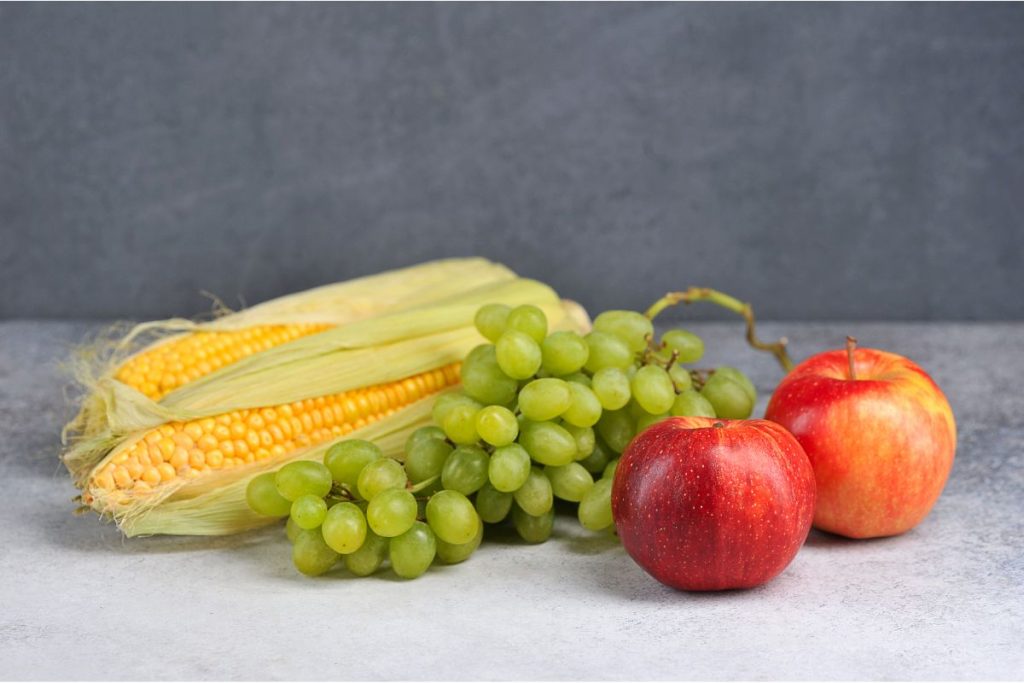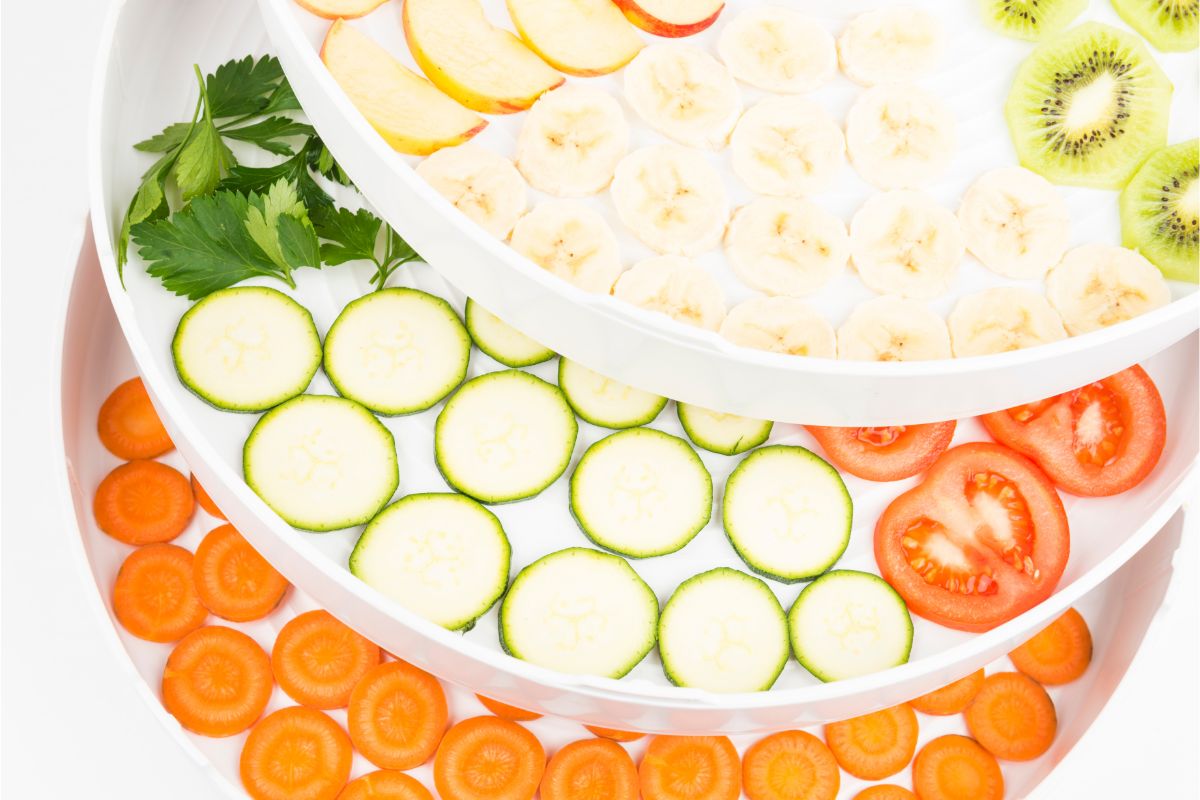Fruits and vegetables can be dehydrated at the same time, but it is not recommended. The flavors of different types of food can mix during the drying process, and the temperature and drying time differs for fruits and veggies.
Table of Contents
Is it Possible to Dehydrate Fruit and Vegetables Together?
Though it is possible to dehydrate fruit and vegetables together, it is not advised.
The drying process for fruit is different than that for veggies. Fruits and vegetables dehydrate at different temperatures, and fruits take longer than vegetables to dehydrate.
Additionally, making dried food in a food dehydrator involves drawing the moisture of the product out and into the air. Fruits such as apricots or blueberries have more moisture than vegetables like green beans. This means that the aroma of drying fruit can infuse dehydrated vegetables.
Should You Dehydrate Different Things Together?
Dehydrating different types of food in the same batch should be avoided.
Dehydrated meat such as beef jerky will have different drying conditions than cranberries or zucchini. Unless you plan to eat two different foods together, it is best to dehydrate them separately.
What Vegetables and Fruits Can Be Dehydrated Together?
If you decide to dehydrate fruits and vegetables together, you should pick options that require similar temperatures and don’t have an overpowering taste or aroma. Citrus fruits such as lemons, oranges, or limes, or aromatic vegetables like onions or beets are best avoided.
The combinations below are examples of pairings that may work well:
- Bananas and Zucchini
- Grapes, Apples, and Corn
- Raspberries and Carrots
- Strawberries and Sweet Potatoes
- Tomatoes and Broccoli

How to Dehydrate Fruits and Vegetables Together
Follow these instructions to dehydrate fruits and vegetables at the same time. This guide is for bananas and zucchini but can be adapted for any type of food:
- Prepare your produce. Cut the food into slices roughly an inch thick, trying to make them as uniform as possible so they dry evenly.
- Some fruits require pretreating. If preparing fruit prone to oxidation, such as dried apples or plums, you can treat them with lemon juice, citric acid, or ascorbic acid to prevent browning. Pretreat them for 10 minutes, rinse, then pat dry.
- Blanch your vegetables. Blanching involves putting the vegetables in boiling water for 3-5 minutes to cook them partially and then submerging them in cold water to stop the cooking process. Lay the veggies out on a paper towel to reduce excess moisture.
- Lay out the food. If using a food dehydrator, place the food in a single layer, evenly spread, over two dehydrator trays (one for fruit, one for veggies). If using an oven, line two nonstick baking sheets with parchment paper and separate the fruit and vegetables.
- Dehydrate. For bananas and zucchini, you want to dehydrate at 135 degrees F for 6-12 hours of drying time. Be sure to check on them regularly. When they have reached the correct dryness, they will be crispy and brittle at room temperature.
- Allow to cool, then store. Place in airtight containers and store in a dark, dry cupboard or pantry for long-term storage.
Do Fruits and Vegetables Lose Nutrients When Dehydrated?
Nutrients are not lost by dehydrating food. Instead, the dehydration process concentrates the nutritional value into a smaller, more compact package.
Do You Have to Cut Fruits and Vegetables Into Small Pieces Before Dehydrating them?
Fruits and vegetables can be dehydrated whole, but this can increase the drying time. As a general rule, smaller fruits and vegetables do not need to be cut but will dehydrate faster if their skins are cracked.
Larger fruits or veggies with thicker skins (citrus fruits, apples, broccoli, potato) should be sliced into inch-thick slices before dehydrating.

Is it Safe to Dehydrate Wet Fruits and Vegetables?
Wet fruit and vegetables can be dehydrated safely, but it is best to dry them before beginning the drying process.
Dehydration draws the moisture content from the food, which can then gather in the dehydrator and increase the humidity within the machine. This means a longer drying time and increases the chances of unevenly dried produce.
Shelf Life of Dehydrated Fruits and Vegetables
When properly stored, the shelf life of dehydrated fruits is six months to one year, and dehydrated vegetables last from one to two years.
Storing Dehydrated Fruits and Vegetables
Dehydrated fruits and vegetables should be stored separately, even if they were dehydrated together. This is partly for ease of use, making it easier to get the ingredient you want, and partly to stop the natural flavors from intermingling in storage.
The best way to store dehydrated fruits and veggies is in an airtight container in a cool, dark, dry space. Mason jars are a good option for strong at room temperature. Vacuum-sealed bags are best for storing in the freezer. Make sure to label all your storage containers, especially if you have powdered your dehydrated produce.

